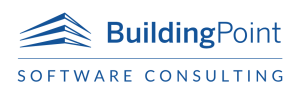I was at an construction industry conference where James Benham, CEO of JBKowledge, Inc., was speaking. I always try to sit in the front of these conferences to pay attention and get the most out of it. Benham certainly delivered engaging information about the industry and how technology is changing mobile construction management.
One of the fantastic things Benham spoke about was 5G wireless capability. It doesn’t seem like that long ago that we were astounded at 2G functionalities. Back in the 1990’s it was amazing just to be able to sent a text and a picture on a phone, very slowly of course. In this modern world of technology, 5G is just around the corner. People will have the ability to download something as long as a full length movie, in literally one second. This is being developed and will hit the market with a bang. Who wouldn’t want that kind of technology?
The construction industry has certainly jumped on mobile technology and it has improved every aspect of their type of business. Mobile devices have practically replaced laptops, and with the abilities they possess, such as cloud computing, it doesn’t look like it will slow down anytime soon. The mobile devices today have as much, if not more computing power than the computers we use in the office or at home. Everyone has access to all data, anywhere, anytime.
Because of the mobile technology that we all use in our personal lives, as well at work, Bring Your Own Device (BYOD), has become common terminology in the construction industry. There is a constant debate about the subject. Should an individual be asked to leave their personal device at home? Can they bring them, and not use them? Does it matter if they are in the office or in the field? Unfortunately, there is no clear cut answer to any of those questions. There’s too much grey area. People have become to exceedingly attached to their phones, many wouldn’t leave them behind when they came to the office. It would be like asking them to leave their wallet or purse home, or to not wear shoes to work.
Then it becomes the burden of the company to set some sort of guidelines down in regards to the use of a personal mobile devices. Workers need to stay productive and the companies information needs to be kept safe. Bring Your Own Common Sense seems to be the answer to this dilemma. Perhaps mobile devices should be treated like personal vehicles are. Many people use their own vehicles for work, some get fuel reimbursement, some get mile reimbursement. The workers are expected to use their vehicle for work at specified times.
On the surface, mobile devices can appear the same as vehicles when using them for work. However, there is one huge problem with mobile devices, security. BYOD opens companies up to their data being compromised in several ways. A mobile device could be accessed by a family member or friend of the employee, it could be stolen, the employee could be angry if they were let go or quit. A mobile device policy can’t protect the companies from this type of exposure.
Technology comes to save the day. There are programs now that create a receptacle for work information within the employees personal device. It safely keeps all information that is used for work in just one place. Enterprise Mobility Management assists IT departments in developing and monitoingr these receptacles. This is heavy stuff for a blog, but I promise you, worth looking into.
BYOD isn’t going anywhere, so construction companies need to find progressive ways to deal with it. Of course, a top priority needs to be to keep your information safe and confidential items private. It is also important to try to keep the employees happy at the same time by letting them bring their device to work. Mobile technology has made it possible for the construction industry to get and stay connected and for projects to work fluidly. Happier employees makes for a more successful business.

